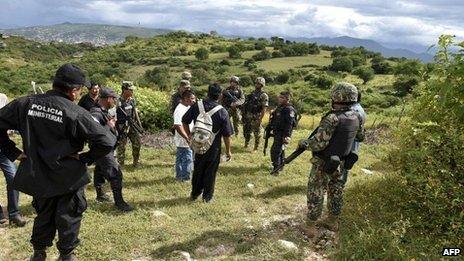Mexico missing students: Nationwide protests held
- Published
Demonstrations took place in many cities across Mexico
Thousands of people have held protests in cities across Mexico against the disappearance of students in the southern town of Iguala last month.
The students had clashed with police during a demonstration and were last seen being bundled into police cars.
Hundreds of local vigilantes have joined the search, saying they would conduct a house-by-house search.
Meanwhile forensic tests are under way on dozens of bodies found in shallow graves near the town last week.
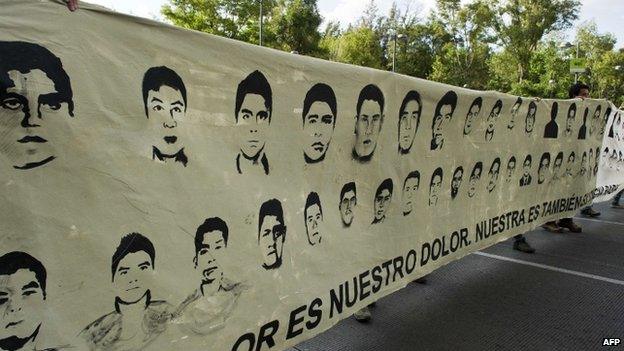
The reasons why police should have opened fire on the students and what may lie behind their disappearance remain unclear
It is feared the bodies could be those of the students.
In Mexico City, family members led a procession, carrying photographs of the disappeared.
Demonstrations also took place in many cities, including Oaxaca, Veracruz, Morelia, and Guerrero.
A silent march was staged by the the EZLN - better known as the Zapatistas indigenous rebel group - in the southern city of San Cristobal de las Casas.
Deadly clashes
The disappearance and the circumstances surrounding it have caused shock in Mexico.

The protesters want the Mexican government to locate the missing students and punish politicians linked to organised crime

Members of the Public Safety System, the community police of Guerrero state, are helping in the search for the missing students in Guerrero state
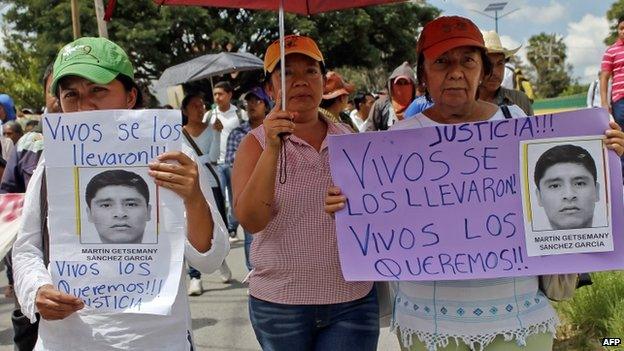
Protesters carried photos of the missing students along a highway in Chilpancingo, Guerrero state
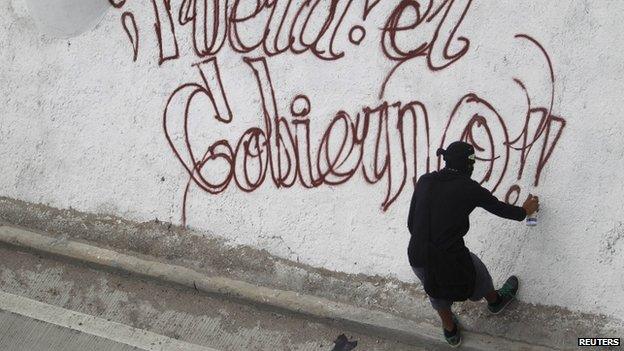
An activist sprayed graffiti demanding the removal of the government during protests in the city of Chilpancingo
The students, from a teacher college in Ayotzinapa in Guerrero State, had travelled to nearby Iguala to protest against what they perceived as discriminatory hiring practices for teachers.
After a day of protests, they wanted to make their way back to their college. Accounts of what happened next differ.
Members of the student union say they boarded three local buses, but the police says the students seized the buses.
In the hours that followed, six people were killed when armed men opened fire on the three buses and that of a local football team which they presumably mistook for one carrying students.
Three students, a footballer, the driver of one of the buses and a woman in a taxi were shot dead. Many more were injured.
Municipal police gave chase to the students, and are believed to have fired at them.
Twenty-two officers have been detained in connection with the shooting.
A student who survived the attack said he had seen police taking away his fellow students. "We blame the state for the forced disappearance of our fellow students," Omar Garcia told reporters in Mexico City.
Speculation
Following the incident on the night of 26 September, 57 students were reported missing. On 30 September it was announced that 13 of them had returned home.
One name was found to have appeared in the list of the missing twice, leaving 43 students unaccounted for.
On 4 October, prosecutors announced they had found six shallow graves containing the remains of at least 28 people.
The mass graves are overwhelming, reports Juan Carlos Perez Salazar
The bodies are so badly burnt they have not yet not been identified. Forensic experts said it could take days or even weeks to carry out DNA tests.
The reasons why police should have opened fire on the students and what may lie behind their disappearance remain unclear.
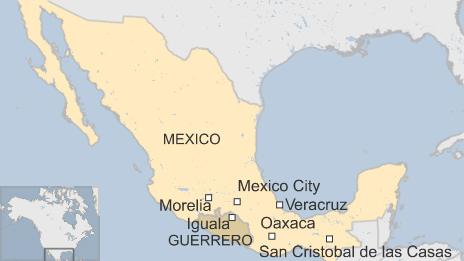
A number of different theories have been put forward.
The students all went to a local teacher training college with a history of left-wing activism, but it is not clear whether they were targeted for their political beliefs.
Some think that they may have angered a local drug gang called Guerreros Unidos by refusing to pay extortion money.
Others believe there may be a link between the students' disappearance and a speech given by the wife of Iguala's mayor on the day of the clashes.
Maria de los Angeles Pineda Villa was speaking to local dignitaries when the students were protesting in Iguala and some believe they may have been targeted because it was feared they could disrupt the event.
Police are searching for her husband, mayor Jose Luis Abarca Velazquez.

Iguala's mayor and his wife have not been seen since the events on 26 September
- Published7 October 2014
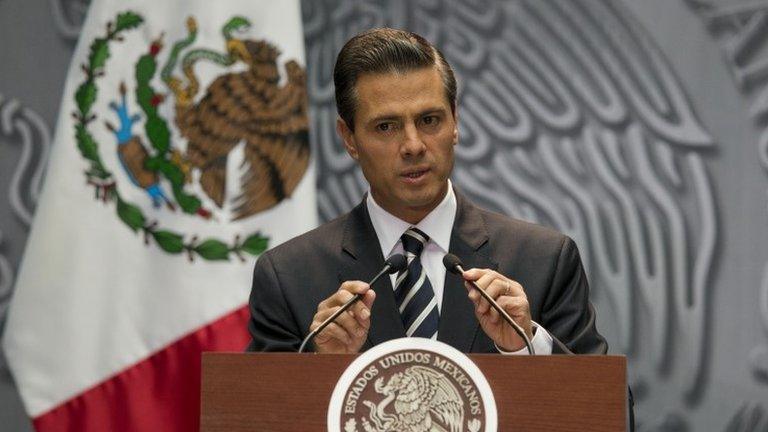
- Published5 October 2014
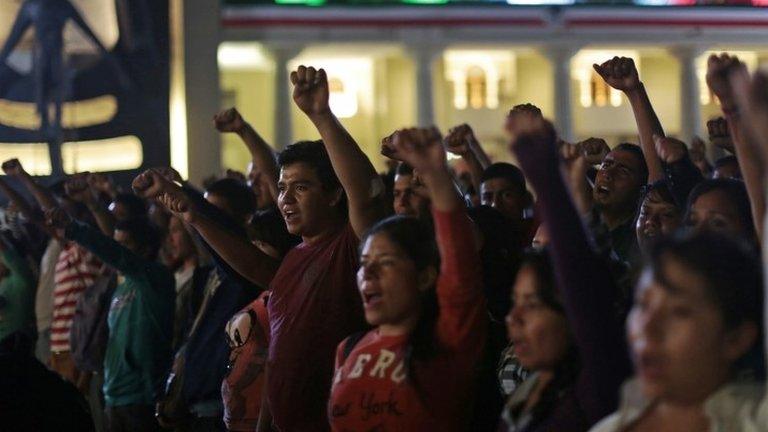
- Published3 October 2014
